I have a minor update to make. I have been working slowly (not much free time these days), so data will be coming infrequently. I am also running out of my supply of Catlabs Pro 320, so I will have to buy additional rolls of 35mm in the near future.
My initial test was disappointing because the film ended up being severely underexposed. Analyzing film curves with such long toes is difficult, and their interpretation somewhat unreliable. Clearly, the amount of exposure needs to be significantly greater than that required for an ISO 200 film, at least under my experimental conditions.
I am, therefore, running another test. This time, I am giving the film a lot more exposure than the recommended ISO 320 or EI 200. Unfortunately, it's not possible to do reliably with my calibrated sensitometer because I would have to use exposures in excess of 2 seconds. Without knowing reciprocity data from the manufacturer, such a test would be futile.
So I constructed a makeshift pseudo sensitometer. It is very simple, but I think, given my test results so far, it's reliable, at least, in giving consistent exposure from trial to trial. I am using an enlarger with a condenser head. Underneath the light source, I placed an 80A filter. Then, I have a recently CLA'ed Copal shutter installed on the enlarger lens board. Just a shutter, without a lens. I am using the shutter speed of 1/4 sec. I have tested it, and, indeed, the shutter is open for almost exactly 0.25 sec. I measured the light level on my enlarger base board to be around 23 Lux. I attach a few pictures of the contraption.
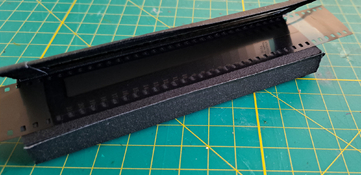
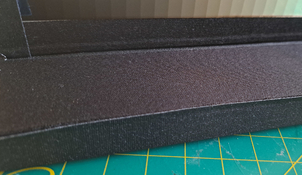
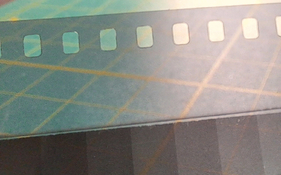
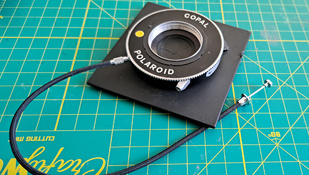
I must emphasize the fact that this "sensitometer" is
not professionally calibrated. Therefore, its
data cannot be relied upon to give absolute exposure values. However, it can be used, I think, to give a rough idea of film performance (including estimated film speed, CI, G, Gamma, etc.). But, more than anything, I think it can be used to give a decent idea of
relative performance, as in, for example, comparing two (or more films).
To establish a baseline, I used a strip of Catlabs Pro 320 and Arista Edu Ultra 100 (both fresh). I used the exact same exposure and developed both in the same tank in D76 1+1 at 20C for 8 minutes in a rotary processor. I am attaching the curves of those two films obtained in this first test.
I think that this is roughly the kind of curve that we can expect from Catlabs Pro 320, given enough exposure. I think that current amount of exposure is appropriate to run a full film test. If you disagree, please let me know and I will be glad to adjust the exposure accordingly.
My preliminary findings from these two curves are that the "speed point" exposures are around 2.7 for AEU100 and 2.41 for CPro320, respectively, so the rough difference in film speed seems to be around one stop. In this non-calibrated test, I am getting around IS0 70 for AEU100 and ISO 35.7 for CPro320, if developed to the same average gradient of 0.62. Also, note, AEU100 has much higher B+F density than the CPro320, hence it is "higher" in the plot.
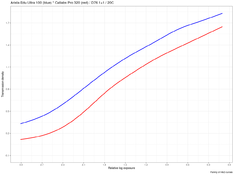
There's a lot more data coming...





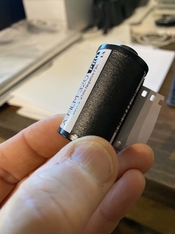
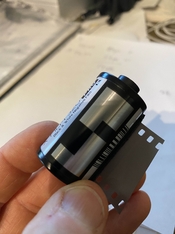











 ).
).